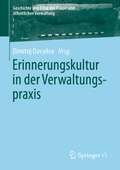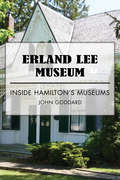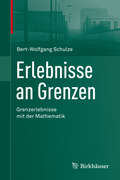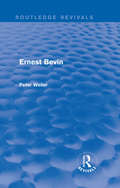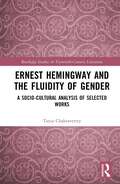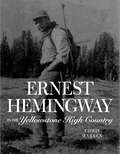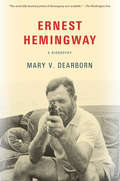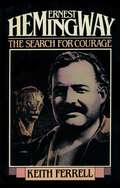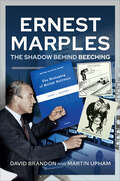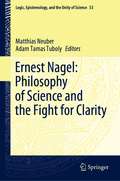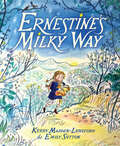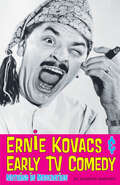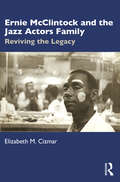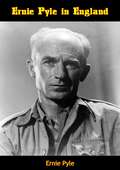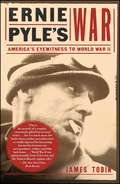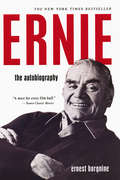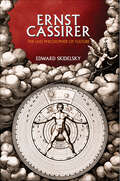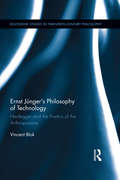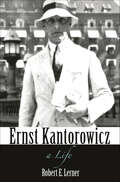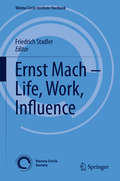- Table View
- List View
Erinnerungskultur in der Verwaltungspraxis (Geschichte und Ethik der Polizei und öffentlichen Verwaltung)
by Dimitrij DavydovDie Aufrechterhaltung der Erinnerung an die Opfer von Krieg und Gewaltherrschaft, an Widerstand, Flucht und Vertreibung wird heute überwiegend als eine gesamtgesellschaftliche Aufgabe wahrgenommen und nicht als eine alleinige Prärogative des Staates. Dennoch ist öffentliches Erinnern und Gedenken als Bestandteil des kulturstaatlichen Auftrags von Bund, Ländern und Kommunen anerkannt. Der Umgang des Staates und seiner Institutionen mit (schmerzhafter) Vergangenheit und den Orten, an denen die Erinnerung an diese Vergangenheit „haftet“, ist zwar seit Jahren Gegenstand intensiver Forschung. Die verwaltungsrechtliche und verwaltungshistorische Perspektive ist dabei jedoch deutlich unterrepräsentiert gewesen. Nicht nur Fragen der Aufgabenverteilung zwischen den staatlichen und den zivilgesellschaftlichen Akteuren, sondern auch die Kompetenzen, Organisationsformen und Entscheidungsmaßstäbe der mit Erinnerungsaufgaben befassten Behörden und Einrichtungen sind bislang nur punktuell beleuchtet worden. Sind der Bund und die Länder allein als Förderer oder Koordinatoren für kommunale und zivilgesellschaftliche erinnerungskulturelle Aktivitäten gefragt? Besteht ein Handlungsbedarf für die Schaffung einer zentralen – zumindest einer überörtlichen – erinnerungskulturellen Infrastruktur? Bedürfen Gedenkstätten und andere Erinnerungsorte eines spezifischen ordnungsrechtlichen Schutzes? Wie kann die Sicherstellung des Pietätsschutzes an Orten des Gedenkens verfassungskonform ausgestaltet werden? Erfordert ein angemessener Umgang mit flächenhaften Zeugnissen der deutschen Vergangenheit wie dem Westwall und den Relikten des „Eisernen Vorhangs“ besondere rechtliche Vorkehrungen?Diese Lücke soll der vorliegende Band füllen, der im Rahmen eines von der Hochschule für Polizei und öffentliche Verwaltung des Landes Nordrhein-Westfalen geförderten Projekts entstanden ist. Autor:innen des Bandes sind Jurist:innen und Historiker:innen aus den Bereichen Lehre, Forschung und Verwaltung.
Eritrea: Even The Stones Are Burning
by Roy PatemanIn Eritrea: Even the Stones are Burning, published in 1990, Professor Roy Pateman of the University of California at Los Angeles traces the Eritreans' response to Ethiopian occupation of their land and the origins of the war against Ethiopia. He provides a survey of Eritrean history, with a special inside look at the military and other developments in the last two decades ending around 1990. Pateman examines the impact of U.S. foreign policy on the region and the people, the political ideologies of the independence movement, the tragic famine which has taken tens of thousands of lives and the vision of the liberation fighters for a post-independence society. To learn about post-liberation Eritrea, see Dan Connell's Historical Dictionary of Eritrea published in 2019.
Erland Lee Museum: Inside Hamilton's Museums
by John GoddardInside Hamilton’s Museums helps to satisfy a growing curiosity about Canada’s steel capital as it evolves into a post-industrial city and cultural destination. In this special excerpt we visit Erland Lee Museum, which stands as an excellent example of Ontario Gothic Revival architecture and serves as the birthplace of the Women's Institute movement. John Goddard takes us on a detailed tour of the historic home, providing fascinating historical background and insight.
Erlebnisse an Grenzen - Grenzerlebnisse mit der Mathematik
by Bert-Wolfgang SchulzeDie innerdeutsche Grenze verlief nicht nur zwischen zwei Staaten, sondern spiegelte sich sogar in den Grundlagenwissenschaften wie der Mathematik wider. Aus persönlicher Sicht zeigt der Autor den subjektiven Umgang mit Erzeugung, Bewertung und Propagierung wissenschaftlicher Resultate in den zwei unterschiedlichen Gesellschaftssystemen. Auf unterhaltsame Art werden Innensichten aus Forschungsinstitutionen, der Wissenschaftsförderung und die verschiedenen Einstellungen zur Zweckbestimmung reiner und angewandter Forschung dargelegt.
Ernest Bevin (Routledge Revivals)
by Peter WeilerFirst published in 1993, this book presents a biography of a central figure in the development of both the labour movement and British politics in the first half of the twentieth century. This highly accessible account of Bevin’s life and career was the first to make use of documents pertaining to his activities during the Second World War and bring together numerous secondary studies to posit an alternative interpretation. The book is split into chronological sections dealing with his early years, his time a trade union leader from 1911 to 1929, the beginnings of his involvement in the labour party during 1929-1939, and his time in office as Minister of Labour and then Foreign Secretary.
Ernest Bloch Studies
by Norman Solomon Alexander KnappErnest Bloch left his native Switzerland to settle in the United States in 1916. One of the great twentieth-century composers, he was influenced by a range of genres and styles - Jewish, American and Swiss - and his works reflect his lifelong struggle with his identity. Drawing on firsthand recollections of relatives and others who knew and worked with the composer, this collection is the most comprehensive study to date of Bloch's life, musical achievement and reception. Contributors present the latest research on Bloch's works and compositional practice, including studies of his Avodath Hakodesh (Sacred Service), violin pieces such as Nigun, the symphonic Schelomo, and the opera Macbeth. Setting the quality and significance of Bloch's output in its historical and cultural contexts, this book provides scholarly analyses as well as a full chronology, list of online resources, catalogue of published and unpublished works, and selected further reading.
Ernest Hemingway and the Fluidity of Gender: A Socio-Cultural Analysis of Selected Works (Routledge Studies in Twentieth-Century Literature)
by Tania ChakraverttyErnest Hemingway and the Fluidity of Gender presents fresh insight into the gender issues and sexual ambiguities that have always been present in Hemingway’s work, utilising a variety of historical, socio-cultural and biographical contexts. Offering a close analysis of the gender issues and sexual ambiguities present in Hemingway’s work, this book provides insight into the position of white middle-class women in America from the mid-nineteenth to the mid-twentieth century, illuminating Hemingway’s androgynous impulses and the attitudinal changes that occurred during Ernest Hemingway’s lifetime. Women and gender were Hemingway’s steady concern; his fictional females are drawn with the same kind of complexity and individuality like his fictional males, manifesting endurance, stoic courage and grace under pressure. This volume highlights Hemingway’s textual world’s resistance of patriarchal phallocratism and his abolition of the binaries of masculinity/femininity, passivity/activity and the like, dismantling binary oppositions involving gender and sexuality. Exploring the metamorphosis of American social and cultural history, this volume unravels the stereotypical myths associated with womanhood and the complexity of women in Ernest Hemingway’s novels. Tania Chakravertty is the Dean of Students’ Welfare, Diamond Harbour Women’s University, West Bengal, India. Chakravertty has a Ph.D. from Calcutta University on “Gender Representations in the Fiction of Ernest Hemingway”. Chakravertty visited the US to participate in the academic group project “Strengthening and Widening the Scope of American Studies: The U.S. Experience” in 2010 as part of the prestigious International Visitor Leadership Program. Her monographs have appeared in national and international journals.
Ernest Hemingway in the Yellowstone High Country
by Christopher Miles WarrenIn the 1930s, iconic American author Ernest Hemingway spent five summers at a ranch on the edge of Yellowstone National Park. Here he did some of his best writing, and his experiences in the mountains are connected to twelve of his most famous works, including For Whom the Bell Tolls. Hemingway declared that the ranch near the small, wilderness town of Cooke City, Montana, on the edge of Yellowstone, was one of his favorite places to write in the world, on par with Paris and Madrid.Yet Hemingway&’s time in the Yellowstone High Country has never been thoroughly examined—until now. After years of painstaking research, author Chris Warren takes readers on an astonishing journey into one of the most important periods in the life of one of the world&’s most important writers. Winner of the Nobel Prize for literature, Hemingway was at his best—as a man, father, and writer—when he was in the Yellowstone High Country, and in this fascinating and thoroughly enjoyable book, Warren examines what Hemingway did here, what he wrote here, and how his experiences and the people he met here shaped his life and work. This is a Hemingway that few readers knew existed, living in a place that few scholars knew was so essential to his writing.Author Chris Warren, a resident of Cooke City, Montana, has spent years researching Hemingway&’s connection to the area. In 2018 he presented a paper on Hemingway&’s final short story, which was set in Cooke City, to the Hemingway Society in Paris, France. Warren&’s research was instrumental in bringing the society&’s biennial conference to Cooke City, Montana, and Sheridan, Wyoming, in 2020.
Ernest Hemingway: A Biography
by Mary V. DearbornThe first full biography of Ernest Hemingway in more than fifteen years; the first to draw upon a wide array of never-before-used material; the first written by a woman, from the widely acclaimed biographer of Norman Mailer, Peggy Guggenheim, Henry Miller, and Louise Bryant. A revelatory look into the life and work of Ernest Hemingway, considered in his time to be the greatest living American novelist and short-story writer, winner of the 1953 Pulitzer Prize for Fiction and the Nobel Prize in Literature in 1954. Mary Dearborn's new biography gives the richest and most nuanced portrait to date of this complex, enigmatically unique American artist, whose same uncontrollable demons that inspired and drove him throughout his life undid him at the end, and whose seven novels and six-short story collections informed--and are still informing--fiction writing generations after his death.From the Hardcover edition.
Ernest Hemingway: The Search for Courage
by Keith FerrellErnest Hemingway was one of the most controversial and admired writers of his time. This biography covers his life from his childhood in Oak Park, Illinois, to his suicide in 1961. It offers a sympathetic portrait of a brilliant artist and a complex individual—a private man who led a very public life.Hemingway&’s formal education ended after high school when the ambitious young writer went off to work for The Kansas City Star. Eager to see the war, he volunteered for ambulance corps duty in Italy during World War I. Some of his most exciting and productive years were spent in postwar Paris, living among a group of writers and artists from around the world.In the 1930s Hemingway became as famous for his personality as for his writing, and he spent more of his time hunting and fishing competitively. But when war broke out in his beloved Spain, he went to serve as a correspondent on the loyalist side. In 1940 his novel For Whom the Bell Tolls, based on his wartime experiences, was published to critical acclaim and financial success. World War II found Hemingway working as a correspondent once again, and prone to fighting and drinking. Despite this decline, he wrote The Old Man and the Sea, which celebrated the courage of an aged Cuban fisherman, and went on to win the Nobel Prize for literature in 1954.Keith Ferrell conveys the scope of Hemingway&’s achievement as a writer and gives a vivid portrait of one of America&’s finest authors.
Ernest Marples: The Shadow Behind Beeching
by David Brandon Martin UphamErnest Marples revolutionised three UK government departments. At Transport (1959-1964) he appointed Dr Beeching chairman of British Railways and commissioned him to produce his infamous report, inaugurated motorways and introduced significant regulations for motorists. At Housing (1951-1954) he delivered 300,000 new houses annually and as Postmaster General (1957-1959), he reformed Post Office accounting systems and launched postcodes and Subscriber Trunk Dialling. This first biography of Marples uses newly-available archives to examine public and private transport policy, the growing power of the pro-road lobby and the identification of personal freedom with driving. Railway sentimentalism was no match for these. Marples was lucky not to be implicated in the Profumo Affair which rocked the Conservative Party but his political career was over soon afterwards. Questionable business practices caused his 1975 flight to Monaco hotly pursued by the Inland Revenue. Beeching, unhappy under a Labour government, returned to private industry although he later chaired a Royal Commission. Labour, despite promises, proved little friendlier to the railways but a more positive approach to loss-making passenger services eventually emerged under Barbara Castle. This book should appeal to those interested in Britain's railways and in mid-Twentieth Century British politics.
Ernest Nagel: Philosophy of Science and the Fight for Clarity (Logic, Epistemology, and the Unity of Science #53)
by Matthias Neuber Adam Tamas TubolyThis volume is dedicated to the life and work of Ernest Nagel (1901-1985) counted among the influential twentieth-century philosophers of science. Forgotten by the history of philosophy of science community in recent years, this volume introduces Nagel’s philosophy to a new generation of readers and highlights the merits and originality of his works.Best known in the history of philosophy as a major American representative of logical empiricism with some pragmatist and naturalist leanings, Nagel’s interests and activities went beyond these limits. His career was marked with a strong and determined intention of harmonizing the European scientific worldview of logical empiricism and American naturalism/pragmatism. His most famous and systematic treatise on, The Structure of Science, appeared just one year before Thomas Kuhn’s even more renowned, The Structure of Scientific Revolutions. As a reflection of Nagel’s interdisciplinary work, the contributing authors’ articles are connected both historically and systematically. The volume will appeal to students mainly at the graduate level and academic scholars. Since the volume treats historical, philosophical, physical, social and general scientific questions, it will be of interest to historians and philosophers of science, epistemologists, social scientists, and anyone interested in the history of analytic philosophy and twentieth-century intellectual history.
Ernestine's Milky Way
by Kerry Madden-LunsfordAn empowering picture book set in the 1940s about a determined five-year-old girl who embarks on a journey to deliver milk to her neighbors in the holler.Every morning, Ernestine shouts out her window to the Great Smoky Mountains, "I'm five years old and a big girl!" When Mama asks Ernestine--who helps with chores around the farm while Papa is away at war--to carry two mason jars filled with milk to their neighbor, Ernestine isn't sure she can do it. After all, she'd need to walk through thickets of crabapple and blackberry by the creek, not to mention past vines of climbing bittersweet. But Ernestine is five years old and a big girl, so off she sets. Along the way, one mason jar slips from her arms and rolls down the mountainside into the river, and Ernestine is sure it's lost forever . . . until her neighbor's son shows up with a muddy jar--and there's a surprise inside! With tons of flavor and a can-do spirit, here is a celebration of American history and a plucky girl who knows that helping a family in need is worth the trouble.
Ernie Kovacs & Early TV Comedy: Nothing in Moderation
by Andrew HortonAmong the pioneers of television, Ernie Kovacs was one of the most original and imaginative comedians. His zany, irreverent, and surprising humor not only entertained audiences throughout the 1950s and early 1960s, but also inspired a host of later comedies and comedians, including Monty Python, David Letterman, much of Saturday Night Live, Rowan and Martin’s Laugh-In, Captain Kangaroo, and even Sesame Street. Kovacs created laughter through wildly creative comic jokes, playful characterizations, hilarious insights, and wacky experiments. “Nothing in moderation,” his motto and epitaph, sums up well Kovacs’s wholehearted approach to comedy and life. In this book, Andrew Horton offers the first sustained look at Ernie Kovacs’s wide-ranging and lasting contributions to the development of TV comedy. He discusses in detail Kovacs’s work in New York, which included The Ernie Kovacs Show (CBS prime time 1952–1953), The Ernie Kovacs Show (NBC daytime variety 1956–1957), Tonight (NBC late-night comedy/variety 1956-1957), and a number of quiz shows. Horton also looks at Kovacs’s work in Los Angeles and in feature film comedy. He vividly describes how Kovacs and his comic co-conspirators created offbeat characters and zany situations that subverted expectations and upended the status quo. Most of all, Horton demonstrates that Kovacs grasped the possibility for creating a fresh genre of comedy through the new medium of television and exploited it to the fullest.
Ernie Kovacs & Early TV Comedy: Nothing in Moderation
by Andrew HortonAmong the pioneers of television, Ernie Kovacs was one of the most original and imaginative comedians. His zany, irreverent, and surprising humor not only entertained audiences throughout the 1950s and early 1960s, but also inspired a host of later comedies and comedians, including Monty Python, David Letterman, much of Saturday Night Live, Rowan and Martin’s Laugh-In, Captain Kangaroo, and even Sesame Street. Kovacs created laughter through wildly creative comic jokes, playful characterizations, hilarious insights, and wacky experiments. “Nothing in moderation,” his motto and epitaph, sums up well Kovacs’s wholehearted approach to comedy and life. In this book, Andrew Horton offers the first sustained look at Ernie Kovacs’s wide-ranging and lasting contributions to the development of TV comedy. He discusses in detail Kovacs’s work in New York, which included The Ernie Kovacs Show (CBS prime time 1952–1953), The Ernie Kovacs Show (NBC daytime variety 1956–1957), Tonight (NBC late-night comedy/variety 1956-1957), and a number of quiz shows. Horton also looks at Kovacs’s work in Los Angeles and in feature film comedy. He vividly describes how Kovacs and his comic co-conspirators created offbeat characters and zany situations that subverted expectations and upended the status quo. Most of all, Horton demonstrates that Kovacs grasped the possibility for creating a fresh genre of comedy through the new medium of television and exploited it to the fullest.
Ernie McClintock and the Jazz Actors Family: Reviving the Legacy
by Elizabeth M. CizmarErnie McClintock and the Jazz Actors Family is a critical biography examining the life and work of Ernie McClintock, the founder of the Jazz Acting Method and 1997 recipient of the Living Legend Award from the National Black Theatre Festival, whose inclusive contributions to acting and actor training have largely remained on the fringes of scholarship and practice. Based on original archival research and interviews with McClintock’s students and peers, this book traces his life from his childhood in Chicago to Harlem in the 1960s at the height of the Black Arts Movement, to Richmond, Virginia in 2003, paying particular attention to his Black Power–influenced, culturally specific acting theory and versatile Black theatrical productions. As a biographical study, this book establishes McClintock as a leading figure of the Black Theatre Movement, proven by the Jazz Acting technique, his critically acclaimed productions, and his leadership positions in organizations such as the Black Theatre Alliance. Ernie McClintock and the Jazz Actors Family explores how the Jazz Acting technique was applied in productions such as N.R. Davidson’s El Hajj Malik, Derek Walcott’s Dream on Monkey Mountain, Cheryl West’s Before It Hits Home, Endesha Mae Holland’s From the Mississippi Delta, and many collectively-authored pieces. The book also investigates why he has been excluded from dominant theatre histories, especially considering how, as a gay Black man, he persistently defied the status quo, questioning practices of administrators of theatres and mainstream theatrical standards. Ernie McClintock and the Jazz Actors Family is situated at the intersection of Black acting theory, Black Arts Movement history, and Black queer studies, and is an illuminating study of an important figure for actors, acting teachers, acting students, and cultural historians. This is an essential resource for readers who are seeking histories and approaches outside of a white, straight, Eurocentric framework.
Ernie McClintock and the Jazz Actors Family: Reviving the Legacy
by Elizabeth M. CizmarErnie McClintock and the Jazz Actors Family is a critical biography examining the life and work of Ernie McClintock, the founder of the Jazz Acting Method and 1997 recipient of the Living Legend Award from the National Black Theatre Festival, whose inclusive contributions to acting and actor training have largely remained on the fringes of scholarship and practice.Based on original archival research and interviews with McClintock’s students and peers, this book traces his life from his childhood in Chicago to Harlem in the 1960s at the height of the Black Arts Movement, to Richmond, Virginia in 2003, paying particular attention to his Black Power–influenced, culturally specific acting theory and versatile Black theatrical productions. As a biographical study, this book establishes McClintock as a leading figure of the Black Theatre Movement, proven by the Jazz Acting technique, his critically acclaimed productions, and his leadership positions in organizations such as the Black Theatre Alliance. Ernie McClintock and the Jazz Actors Family explores how the Jazz Acting technique was applied in productions such as N.R. Davidson’s El Hajj Malik, Derek Walcott’s Dream on Monkey Mountain, Cheryl West’s Before It Hits Home, Endesha Mae Holland’s From the Mississippi Delta, and many collectively-authored pieces. The book also investigates why he has been excluded from dominant theatre histories, especially considering how, as a gay Black man, he persistently defied the status quo, questioning practices of administrators of theatres and mainstream theatrical standards.Ernie McClintock and the Jazz Actors Family is situated at the intersection of Black acting theory, Black Arts Movement history, and Black queer studies, and is an illuminating study of an important figure for actors, acting teachers, acting students, and cultural historians. This is an essential resource for readers who are seeking histories and approaches outside of a white, straight, Eurocentric framework.
Ernie Pyle in England
by Ernie PyleErnie Pyle’s human and unforgettable picture of England under the Blitzkrieg—a deeply moving story of courage and faith.Ernie Pyle in England, first published in 1941, is the account of the journalist’s stay in England, Scotland and Wales during the height of the German bombing blitz on London and other cities of the United Kingdom.Pyle, one of the most famous correspondents of the Second World War, had an easy-going, folksy-style of writing, making the book an enjoyable yet informative read about the conditions he encountered. His descriptions of the effects of the bombing, nights spent in air raid shelters, food- and gas-rationing, and daily life in London remain classic pieces of war-time reporting.
Ernie Pyles War: America's Eyewitness to World War II
by James TobinWhen a machine-gun bullet ended the life of war correspondent Ernie Pyle in the final days of World War II, Americans mourned him in the same breath as they mourned Franklin Roosevelt. To millions, the loss of this American folk hero seemed nearly as great as the loss of the wartime president.If the hidden horrors and valor of combat persist at all in the public mind, it is because of those writers who watched it and recorded it in the faith that war is too important to be confined to the private memories of the warriors. Above all these writers, Ernie Pyle towered as a giant. Through his words and his compassion, Americans everywhere gleaned their understanding of what they came to call “The Good War.” Pyle walked a troubled path to fame. Though insecure and anxious, he created a carefree and kindly public image in his popular prewar column—all the while struggling with inner demons and a tortured marriage. War, in fact, offered Pyle an escape hatch from his own personal hell. It also offered him a subject precisely suited to his talent—a shrewd understanding of human nature, an unmatched eye for detail, a profound capacity to identify with the suffering soldiers whom he adopted as his own, and a plain yet poetic style reminiscent of Mark Twain and Will Rogers. These he brought to bear on the Battle of Britain and all the great American campaigns of the war—North Africa, Sicily, Italy, D-Day and Normandy, the liberation of Paris, and finally Okinawa, where he felt compelled to go because of his enormous public stature despite premonitions of death. In this immensely engrossing biography, affectionate yet critical, journalist and historian James Tobin does an Ernie Pyle job on Ernie Pyle, evoking perfectly the life and labors of this strange, frail, bald little man whose love/hate relationship to war mirrors our own. Based on dozens of interviews and copious research in little-known archives, Ernie Pyle's War is a self-effacing tour de force. To read it is to know Ernie Pyle, and most of all, to know his war.
Ernie: The Autobiography
by Ernest BorgnineWe wept at his Oscar-winning role in Marty. . .we gasped when he took on Frank Sinatra in From Here to Eternity. . .we were riveted by his compelling performances in The Dirty Dozen, Bad Day at Black Rock, and Ice Station Zebra. . .and we laughed at his television sitcom McHale's Navy. We loved all of Ernest Borgnine's many portrayals, but what did we know about the man behind the famous roles? Now for the first time, he tells us in his own words the fascinating story of his life in this witty, candid, and revealing memoir. For more than fifty years, Ernest--or "Ernie" as he's known to his friends--has been one of the most recognized, celebrated stars in Hollywood as well as a respected, talented actor, and a living legend. Stretching from his childhood as the son of Italian immigrants to a spectacular career that is still thriving in his 91st year, from the early days of live TV to the voiceovers for The Simpsons and SpongeBob SquarePants, Ernie tells of the trials and tribulations on his road to fame, the friendships he shared with some of the silver screen's biggest stars, and the glamorous leading ladies he loved. Acclaimed for his ability to play sensitive and tough-guy roles equally well, he was also famous for squaring off against some of Hollywood's most formidable actresses--including Bette Davis in A Catered Affair and Joan Crawford in Johnny Guitar. Recalling his experiences starring in classic movies such as The Poseidon Adventure, The Wild Bunch, and Escape from New York, he reveals personal insights and irresistible stories about cinema's greatest icons--including Spencer Tracy, James Stewart, Kirk Douglas, Montgomery Clift, Gary Cooper, Janet Leigh, Raquel Welch, Gene Hackman, Rock Hudson, Sammy Davis, Jr., Tony Curtis, Alan Ladd, Glenn Ford, and Burt Lancaster. And with characteristic frankness, he also talks about his off-screen loves and passions. A must for every film buff, Ernie: An Autobiography is a fascinating memoir--filled with secrets, well-remembered details, and never-before-told stories--of a star who has thrived in the changing world of Hollywood for more than half a century, and endeared himself to legions of fans everywhere. "(Borgnine's) anecdotes are gleefully self-deprecating. . .he comes off as the kind of guy you'd like to have a beer with." --NY Post "With astute observations on the Hollywood hierarchy and tales about everyone from Lee Marvin and Steve McQueen to Bette Davis and Kim Novak, (Borgnine) writes with an unassuming, no-nonsense tone. His love of filmmaking and his respect for his fellow actors permeates the pages of this engaging and satisfying memoir." --Publishers Weekly "Modest and sweet. . .nicely boiled. Borgnine neither lashes out nor pulls punches." --Entertainment Weekly ". . .a satisfying detailed account of a decades-long career that also included memorable roles in durable blockbusters like The Wild Bunch and The Poseidon Adventure. He comes across as an unspoiled, nice guy who enjoyed his success. . .One of the finest unghosted Hollywood autobiographies." --ALA Booklist "A super read. . .Ernie: The Autobiography by Ernest Borgnine is as nifty as he is." --Cindy Adams, NY Post
Ernst Cassirer: The Last Philosopher of Culture
by Edward SkidelskyThis is the first English-language intellectual biography of the German-Jewish philosopher Ernst Cassirer (1874-1945), a leading figure on the Weimar intellectual scene and one of the last and finest representatives of the liberal-idealist tradition. Edward Skidelsky traces the development of Cassirer's thought in its historical and intellectual setting. He presents Cassirer, the author of The Philosophy of Symbolic Forms, as a defender of the liberal ideal of culture in an increasingly fragmented world, and as someone who grappled with the opposing forces of scientific positivism and romantic vitalism. Cassirer's work can be seen, Skidelsky argues, as offering a potential resolution to the ongoing conflict between the "two cultures" of science and the humanities--and between the analytic and continental traditions in philosophy. The first comprehensive study of Cassirer in English in two decades, this book will be of great interest to analytic and continental philosophers, intellectual historians, political and cultural theorists, and historians of twentieth-century Germany.
Ernst Jünger and Germany: Into the Abyss, 1914-1945
by Thomas R. NevinFor most of his life, Ernst Jünger, one of Europe's leading twentieth-century writers, has been controversial. Renowned as a soldier who wrote of his experience in the First World War, he has maintained a remarkable writing career that has spanned five periods of modern German history. In this first comprehensive study of Jünger in English, Thomas R. Nevin focuses on the writer's first fifty years, from the late Wilhelmine era of the Kaiser to the end of Hitler's Third Reich. By addressing the controversies and contradictions of Jünger, a man who has been extolled, despised, denounced, and admired throughout his lifetime, Ernst Jünger and Germany also opens an uncommon view on the nation that is, if uncomfortably, represented by him.Ernst Jünger is in many ways Germany's conscience, and much of the controversy surrounding him is at its source measured by his relation to the Nazis and Nazi culture. But as Nevin suggests, Jünger can more specifically and properly be regarded as the still living conscience of a Germany that existed before Hitler. Although his memoir of service as a highly decorated lieutenant in World War I made him a hero to the Nazis, he refused to join the party. A severe critic of the Weimar Republic, he has often been denounced as a fascist who prepared the way for the Reich, but in 1939 he published a parable attacking despotism. Close to the men who plotted Hitler's assassination in 1944, he narrowly escaped prosecution and death. Drawing largely on Jünger's untranslated work, much of which has never been reprinted in Germany, Nevin reveals Jünger's profound ambiguities and examines both his participation in and resistance to authoritarianism and the cult of technology in the contexts of his Wilhelmine upbringing, the chaos of Weimar, and the sinister culture of Nazism.Winner of Germany's highest literary awards, Ernst Jünger is regularly disparaged in the German press. His writings, as this book indicates, put him at an unimpeachable remove from the Nazis, but neo-Nazi rightists in Germany have rushed to embrace him. Neither apology, whitewash, nor vilification, Ernst Jünger and Germany is an assessment of the complex evolution of a man whose work and nature has been viewed as both inspiration and threat.
Ernst Jünger’s Philosophy of Technology: Heidegger and the Poetics of the Anthropocene (Routledge Studies in Twentieth-Century Philosophy)
by Vincent BlokThis book examines the work of Ernst Jünger and its effect on the development of Martin Heidegger’s influential philosophy of technology. Vincent Blok offers a unique treatment of Jünger’s philosophy and his conception of the age of technology, in which both world and man appear in terms of their functionality and efficiency. The primary objective of Jünger’s novels and essays is to make the transition from the totally mobilized world of the 20th century toward a world in which a new type of man represents the gestalt of the worker and is responsive to this new age. Blok proceeds to demonstrate Jünger’s influence on Heidegger’s analysis of the technological age in his later work, as well as Heidegger’s conceptions of will, work and gestalt at the beginning of the 1930s. At the same time, Blok evaluates Heidegger’s criticism of Jünger and provides a novel interpretation of the Jünger-Heidegger connection: that Jünger’s work in fact testifies to a transformation of our relationship to language and conceptualizes the future in terms of the Anthropocene. This book, which arrives alongside several new English-language translations of Jünger’s work, will interest scholars of 20th-century continental philosophy, Heidegger, and the history of philosophy of technology.
Ernst Kantorowicz: A Life
by Robert E. LernerThe first complete biography of an influential historian whose dramatic life intersected with many great events and thinkers of the twentieth centuryThis is the first complete biography of Ernst Kantorowicz (1895–1963), an influential and controversial German-American intellectual whose colorful and dramatic life intersected with many of the great events and thinkers of his time. A medieval historian whose ideas exerted an influence far beyond his field, he is most famous for two books—a notoriously nationalistic 1927 biography of the Holy Roman Emperor Frederick II and The King's Two Bodies (1957), a classic study of medieval politics.Born into a wealthy Prussian-Jewish family, Kantorowicz fought on the Western Front in World War I, was wounded at Verdun, and earned an Iron Cross; later, he earned an Iron Crescent for service in Anatolia before an affair with a general’s mistress led to Kantorowicz being sent home. After the war, he fought against Poles in his native Posen, Spartacists in Berlin, and communists in Munich. An ardent German nationalist during the Weimar period, Kantorowicz became a member of the elitist Stefan George circle, which nurtured a cult of the "Secret Germany." Yet as a professor in Frankfurt after the Nazis came to power, Kantorowicz bravely spoke out against the regime before an overflowing crowd. Narrowly avoiding arrest after Kristallnacht, he fled to England and then the United States, where he joined the faculty at Berkeley, only to be fired in 1950 for refusing to sign an anticommunist “loyalty oath.” From there, he “fell up the ladder” to Princeton’s Institute for Advanced Study, where he stayed until his death.Drawing on many new sources, including numerous interviews and unpublished letters, Robert E. Lerner tells the story of a major intellectual whose life and times were as fascinating as his work.
Ernst Mach – Life, Work, Influence (Vienna Circle Institute Yearbook #22)
by Friedrich StadlerThis edited volume features essays written in honor of Ernst Mach. It explores his life, work, and legacy. Readers will gain a better understanding of this natural scientist and scholar who made major contributions to physics, the philosophy of science, and physiological psychology. The essays offer a critical inventory of Mach’s lifework in line with state-of-the-art research and historiography. It begins with physics, where he paved the way for Einstein’s Theory of Relativity. The account continues with Mach's contributions in biology, psychology, and physiology pioneering with an empiricist and gestalthaft Analysis of Sensations. Readers will also discover how in the philosophy of science he served as a model for the Vienna Circle with the Ernst Mach Society as well as paved the way for an integrated history and theory of science. Indeed, his influence extends far beyond the natural sciences -- to the Vienna Medical School and psychoanalysis (R. Bárány, J. Breuer, S. Freud), to literature (Jung Wien, R. Musil), to politics (F. Adler, Austro-Marxism and the Viennese adult education), to arts between Futurism and Minimal Art as well as to social sciences between the liberal school (J. Schumpeter, F. A. von Hayek) and empirical social research (P. Lazarsfeld und M. Jahoda).
